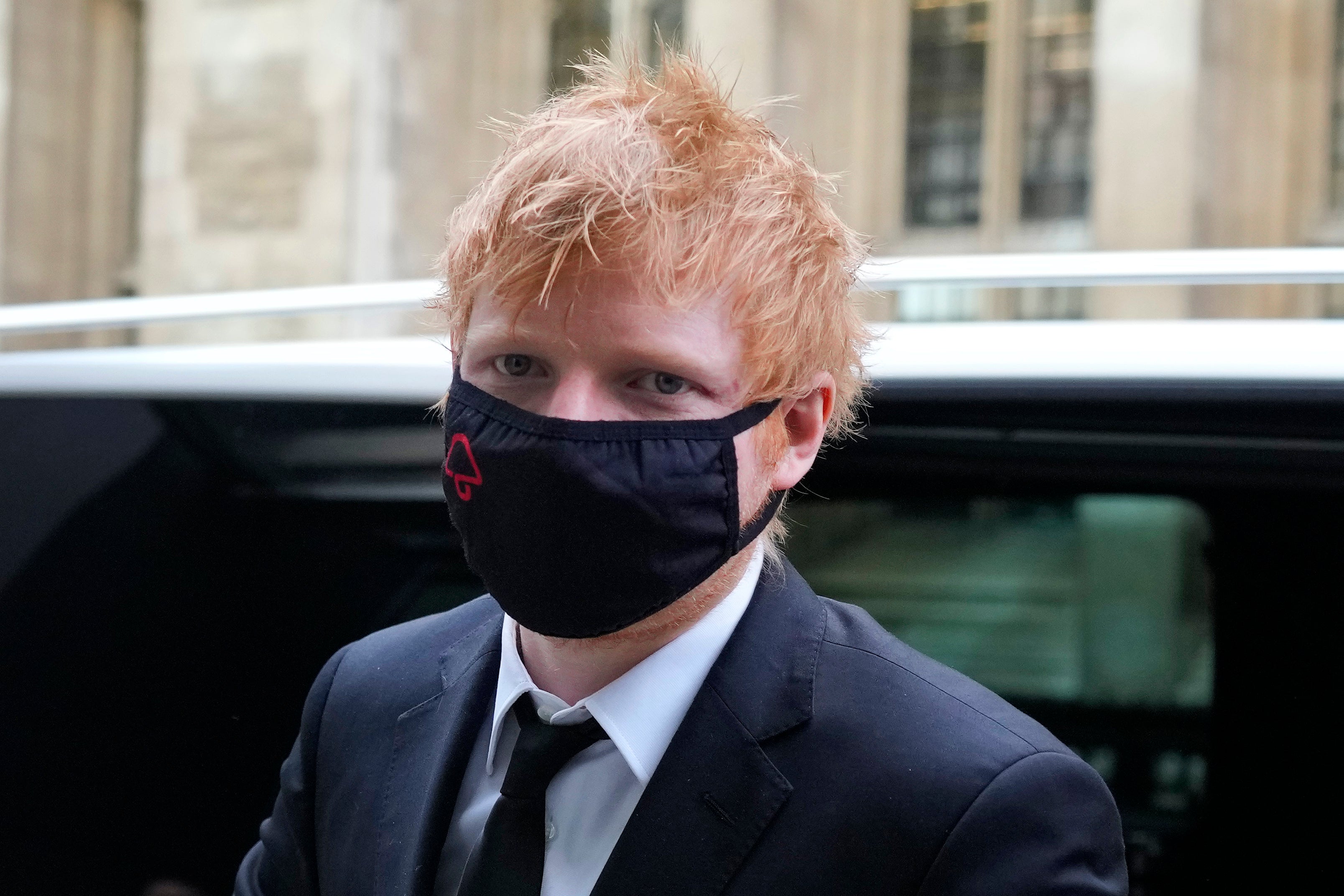The mathematical conundrum dividing opinions in Ed Sheeran’s latest court case
How likely is it that two songs sound the same by chance? There are two ways to answer that question, actually


Ed Sheeran has been in court defending himself against accusations that he plagiarised part of his most popular song – the 2016 hit “Shape of You” – from songwriter Sami Chokri, who performs under the stage name Sami Switch.
Chokri’s lawyers are arguing that Sheeran’s repeated utterance of the “Oh I” in the hook for “Shape of you” was copied from the chorus for Chokri’s 2015 tune, “Oh Why”.
When you listen to the two hooks back-to-back, the similarities are hard to ignore. Indeed the music expert instructed by Sheeran’s lawyers, Anthony Ricigliano, conceded that they sound “phonetically indistinguishable from each other to the casual listener”. But this doesn’t necessarily mean that one is derivative of the other. And Sheeran is adamant that he hadn’t heard the “Oh Why” before the copyright claim came to light.
Chokri’s barrister, Andrew Sutcliffe QC, confirmed that Ricigliano had been unable to find “any examples in any corner of the earth over the past 200 years which sound phonetically the same as the chorus in ‘Oh Why’ and the post chorus in ‘Shape Of You’”. “Do you not find this extraordinary?” Sutcliffe asked the music expert. To which Ricigliano answered a firm, “no”.
This is the crux of the argument. How likely is it that these two songs sound the same by chance? If it is incredibly unlikely for Sheeran to have come up with a hook sounding similar to Chokri’s purely by chance then perhaps the alternative explanation – that he plagiarised the piece – seems more plausible.
This kind of reasoning routinely comes up in the courtroom. But there is another way of looking at this issue.
We should not be thinking about whether there are any songs out there that match Chokri’s specific lyrics. The probability of happening is naturally quite low. Instead, we should be thinking about the probability of any two songs out there matching each other. The probability of that is much higher. And that’s a crucial point.
Spotify, for example, offers more than 82 million tracks. The probability of two songs randomly matching each other is much higher than the probability of finding a match to one specific song.
When you add the fact that the “Oh I” melody is based on pentatonic scale – which West Side Story composer Leonard Bernstein described as "humanity’s favourite scale and so well known that one can find examples of it from all corners of the Earth" – the incidental similarity becomes even more likely.
We can get a handle on the relative probabilities using a simpler example. Let’s imagine an alphabet of just four letters – A, B, C and D. A hundred people are asked to come up with a five-letter word by using this alphabet. Someone might come up with “CADBC” for example (the words don’t have to make sense). In this analogy, coming up with a word is like writing a song.
Using this example, Chokri’s barrister is choosing one of the 100 words at random, and asking the probability that any of the other 99 players randomly pick a specific five-letter word that matches. There are a total of 1024 (45) possible combinations. So the probability any one player doesn’t match the exact word Sutcliffe has selected is 1023 in 1024 – almost certain. The probability that none of the other 99 people matched that chosen word is (1023/1024)99 – about 90 per cent. So, the probability that there is a match purely by chance is low at only 10 per cent.
But we can also approach this differently. What are the chances that any of the 100 words created by those people matched each other? With 100 different words, there are 4950 ways to pair them up – 4950 different ways for the random sequences to match. Because there are so many possible pairs the probability of there being a match amongst two of the 100 players is extraordinarily high – at over 99 per cent.
Could you still argue one copied the other, even though the chance of such a match purely by chance is over 99 per cent? Probably not.
To keep up to speed with all the latest opinions and comment sign up to our free weekly Voices newsletter by clicking here
The same maths lies behind the counterintuitive fact that you only need 23 people in a room before it becomes more likely than not that two of them will share a birthday.
Intuitively we make the mistake of thinking of the probability that someone shares a specific birthday. Then we would need 253 people in the room for the probability of matching that specific day to rise above 50 per cent. But instead, we are just interested in the chance that any two people in that room share a birthday, we need just 23 people for that chance to be above 50 per cent.
No doubt Sheeran’s high profile makes it more likely that people will spot similarities between his music and that of others. When thinking about whether similarity alone is enough to demonstrate plagiarism it’s important to remember that the maths doesn’t always work in the way you might imagine.
Join our commenting forum
Join thought-provoking conversations, follow other Independent readers and see their replies
Comments
Bookmark popover
Removed from bookmarks